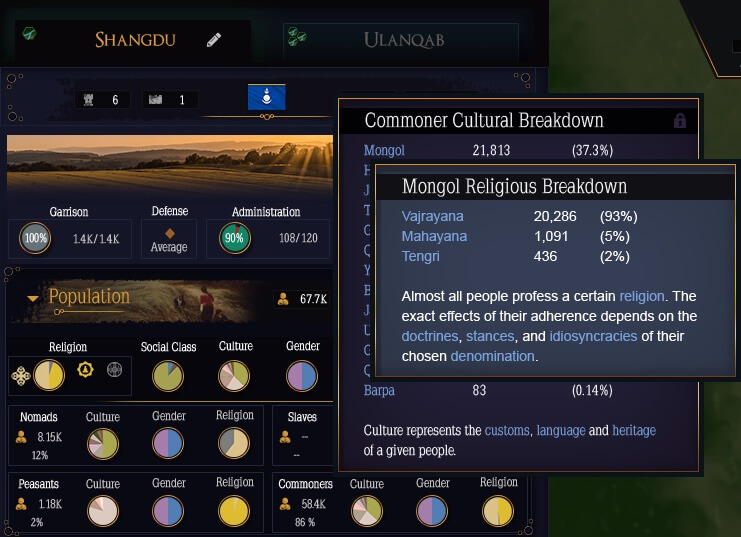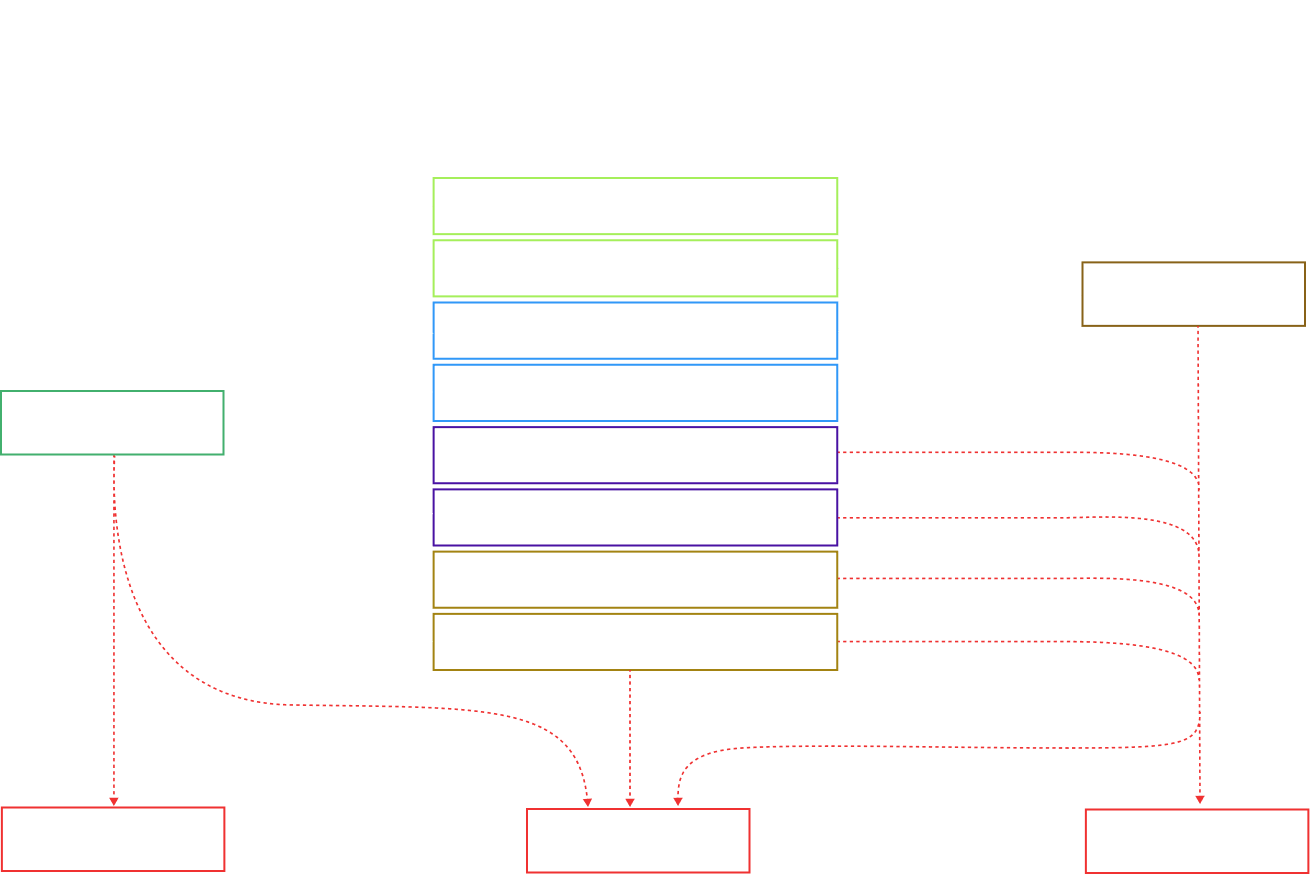Dev Diary #2: Population
19:21, 15 Feb 2022

Hello everyone and welcome to the second development diary for Grey Eminence!
Today, we’ll be taking a detailed look at one of the most important aspects of Grey Eminence: its population system - how it works, what drives it, how you can interact with it, and how you can mod it.
Population
At its core, Grey Eminence is a game about people, both collectively and – for certain notable characters – individually. Modeling their lives is the first step towards being able to simulate more complex phenomena, so we’ve tried to track as many demographic properties as possible.
We mentioned previously that every tile could have its own population. This population is broken down into segments based on age, social class, culture, religion, and gender (in this order). The order is important because we have a specific number for every possible combination of these parameters. In essence, each tile is a database that contains the full information for its population.

Shangdu was once the summer capital of the Yuan dynasty that ruled China in 1356. Built on the orders of Kublai Khan, the city was a meeting point between the Steppe and the Middle Kingdom. For a time, it was the largest city in the Mongolic world - but only decades later, it would be put to the torch by the rising Ming dynasty. Yet that need not be its fate.
By precisely tracking every population segment, we can create a demographic model that can accurately simulate the various processes that occur within a given population.
The Demographic Model
Children are the foundation upon which all populations rest and as such they have their own segment. Unlike other segments, children are not subdivided into culture, religion, or social class. Instead, when they grow up, they are proportionately assigned to the adult segments present in the tile. These proportions can be skewed: cultural discrimination or religious intolerance are but some of the factors that might compel parents to raise their children differently. You, the player, can apply pressure to this process through top-down intervention, though its effectiveness depends on your country’s bureaucratic capacity.
Every month, a fraction of children grow up into adults. These working-age people are the engine that drives the world of Grey Eminence and they are subdivided into social class, culture, religion, and gender.
For most adults, the world of 1356 wasn’t a great place to live. Slavery and serfdom were commonplace, while nomadism was the only way of life in many places across the globe. Economic (let alone political) self-determination was a reality for only a tiny sliver of the population. Yet as the centuries roll by, some societies will trend towards emancipation, ultimately culminating in the modern concept of citizenship, where social class ceases to have a legal meaning.
Adults always belong to a certain culture and (almost) always profess a certain religion. Unlike children, adults are mostly set in their ways. They might renounce their faith under extreme conditions – government mandated or not – but learning a new language and adopting foreign customs is something few can achieve. Lastly, we further subdivide adults into men and women, due to the simple fact that only women can bear children.
While the concept of retirement emerged towards the end of Grey Eminence’s timeline, we have nevertheless dedicated a segment to the elderly. Welfare became a key concern for states during the late 19th and 20th centuries, and an elderly segment helps us model the ramifications of adopting (or disregarding) policies like pensions.

A flowchart depicting the various processes that occur within Grey Eminence’s demographic model.
By making Grey Eminence’s population so granular, we can connect it to various other parts of the simulation. For example, we can link the number of children born per woman to local food availability. We can tailor some diseases to disproportionately afflict children, while others to affect only the elderly. By decoupling birth from death, we can accurately model population booms from the spread of new technologies – or population crashes from pandemics.
How can you, as a player, interact with the population? As we discussed previously, our design philosophy favors top-down strategic decisions over micromanagement. You can enact various policies: from funding the emancipation of serfs or the agglomeration of cities to forced resettlement and mass expulsion. As usual, the effectiveness of such efforts depends on your country’s bureaucratic (or military) capabilities, but in general we are against arbitrarily restricting player agency. The real constraints should be the responses of your country’s elites and general population: if they disagree with what you’re doing, they will give you a hard time.
Population Modding
We promised we’d add a section on how moddable the features in each dev diary are. With population, you can perform various content changes, like adding, editing, or removing social classes, religions, cultures, ages, or genders, but you can also modify the processes of the system itself. You can choose, for example, to make men the segment that gives birth to children, or you can return humanity to the glorious days of mitosis by replacing the reproduction process entirely. You can even reverse the processes’ flow, if you’re curious how a world filled with Benjamin Buttons would turn out (spoiler alert: it ends badly).
In terms of building out the populations of custom worlds, we have a section of our world editor dedicated to population. This includes population brushes that let you add fixed amounts of specific segments to tiles by painting across the globe and a tile/province/region editor, where you can edit population numbers in a more systematic fashion. I’ll leave you with an example of how the latter feature looks; I think it does a great job of illustrating just how much data Grey Eminence is able to process.
Within this province, which consists of 421 tiles, reside 1.436M people subdivided into 2,951 different segments (some of which are aggregated here, since they’re present in more than one tile). Note that this is sample data: we’re still compiling the historical data for many parts of the world, so none of what you see here is final.
That’s all for this dev diary! While we can’t say when the next one will be published, you can expect it to contain a similar level of detail as this one. I’ll reiterate that the graphics, UI and historical data you’re seeing are a work-in-progress and are not final. Stay tuned for more updates by joining our Discord and Subreddit, as well as following us on YouTube, Facebook, and Twitter. And if you like what we’re doing with Grey Eminence, consider supporting us on Patreon. Thanks for reading!


 Back
Back